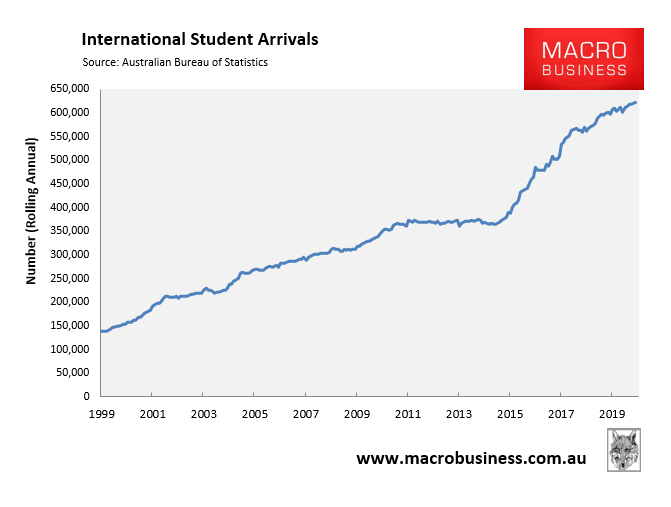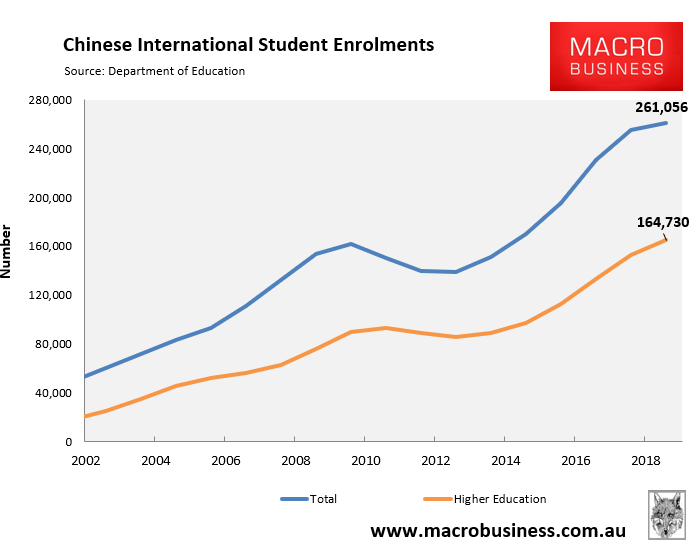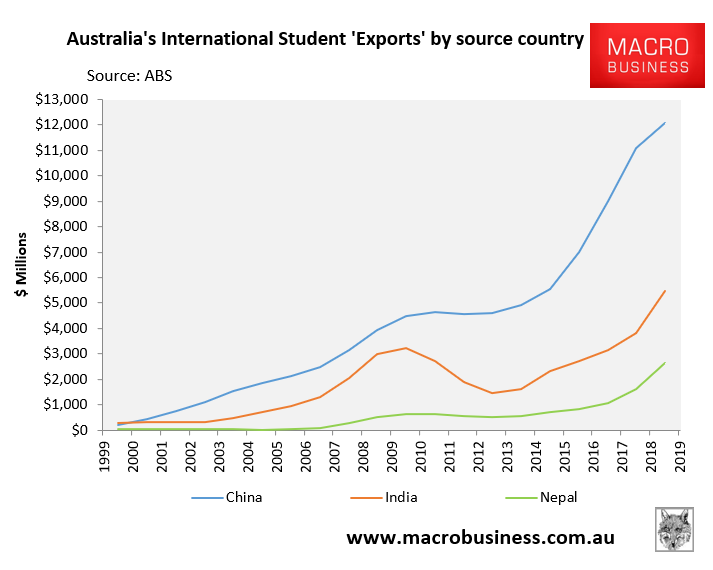International student arrivals surged immediately prior to the travel ban, according to official data:
…there was a 1 per cent net increase of 1350 students arriving in Australia on international student visas in January, compared with the same month of the previous year, reflecting the rush to get into Australia before the travel ban took effect.
This included 2430 more higher education sector students, up 5 per cent, and 600 more postgraduate research students, up 12 per cent. In the schools sector there were 1660 fewer students, down 12 per cent, and 2 per cent fewer students in the vocational education and training sector.
The next chart tracking annual international student arrivals to January 2020 illustrates the situation:

Total international student arrivals rose 4% year-on-year and have surged by 69% since August 2014.
Looking ahead, international student arrivals will collapse. From the same AFR article:
“From our liaison with the education sector, including the universities, as well as student visa numbers, we have information on the number of foreign students who have been unable to resume their studies” [said RBA assistant governor Guy Debelle]…
He noted that since January, inbound airline capacity from China has declined by 90 per cent, “which gives a guide to the size of the decline in arrivals from China”.
Indeed, Fairfax last week revealed that “about 85,000 Chinese international students enrolled in Australian universities remain overseas”. That represents around one-half of Australian universities’ Chinese enrolments last year, and about one-third of total Chinese enrolments across all education sub-sectors:

The loss of these students will also deal a multi-billion dollar blow to both the education sector and broader Australian economy, given Chinese students accounted for $12.1 billion of Australia’s education ‘exports’ in 2019, comprising both tuition fees and living expenses (see next chart).

After the boom comes the bust.

